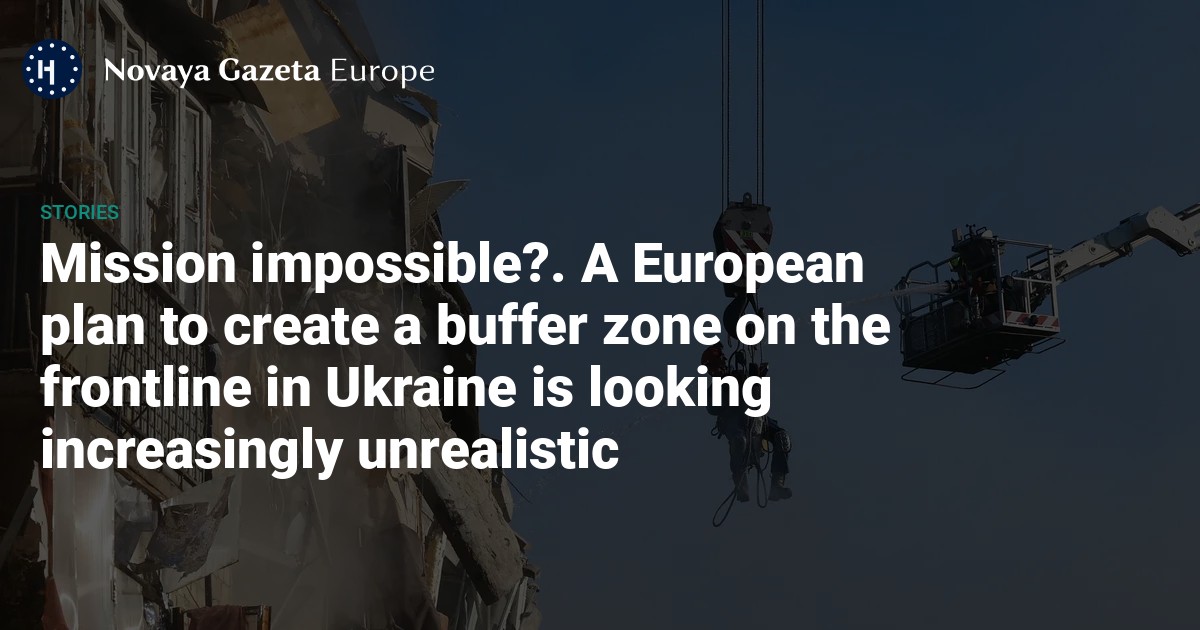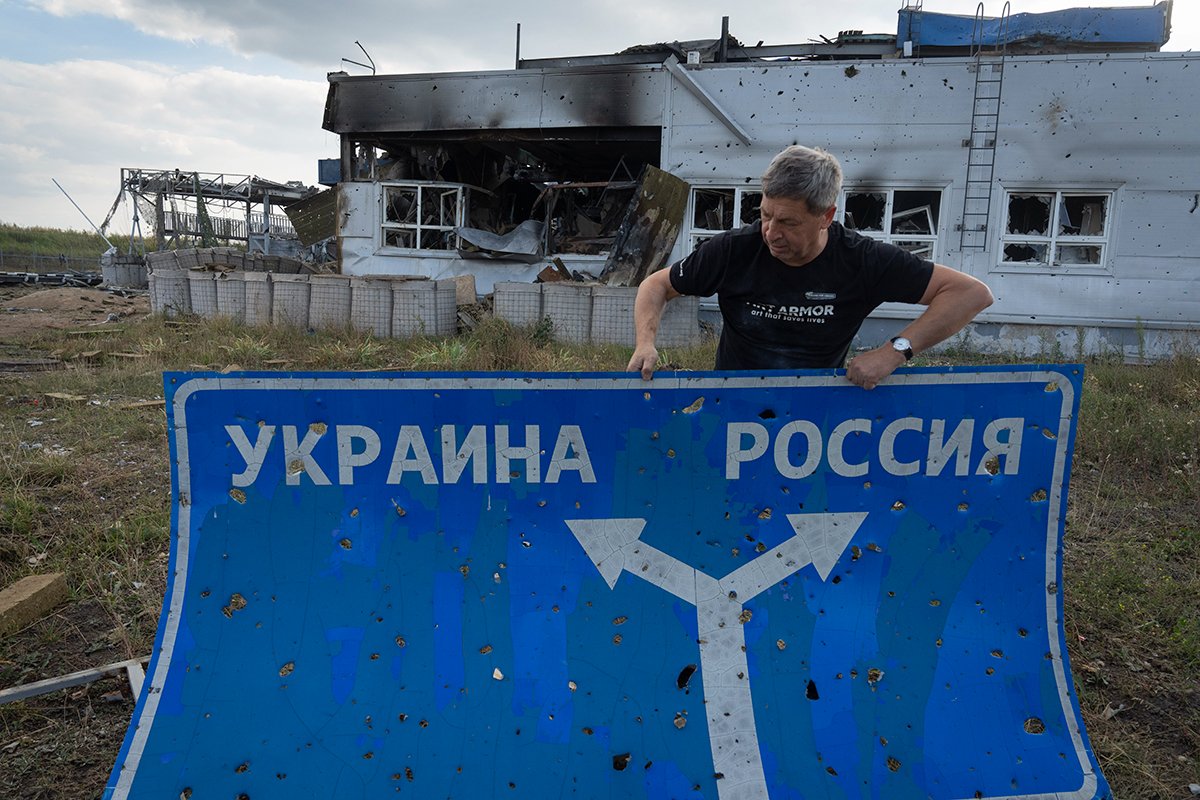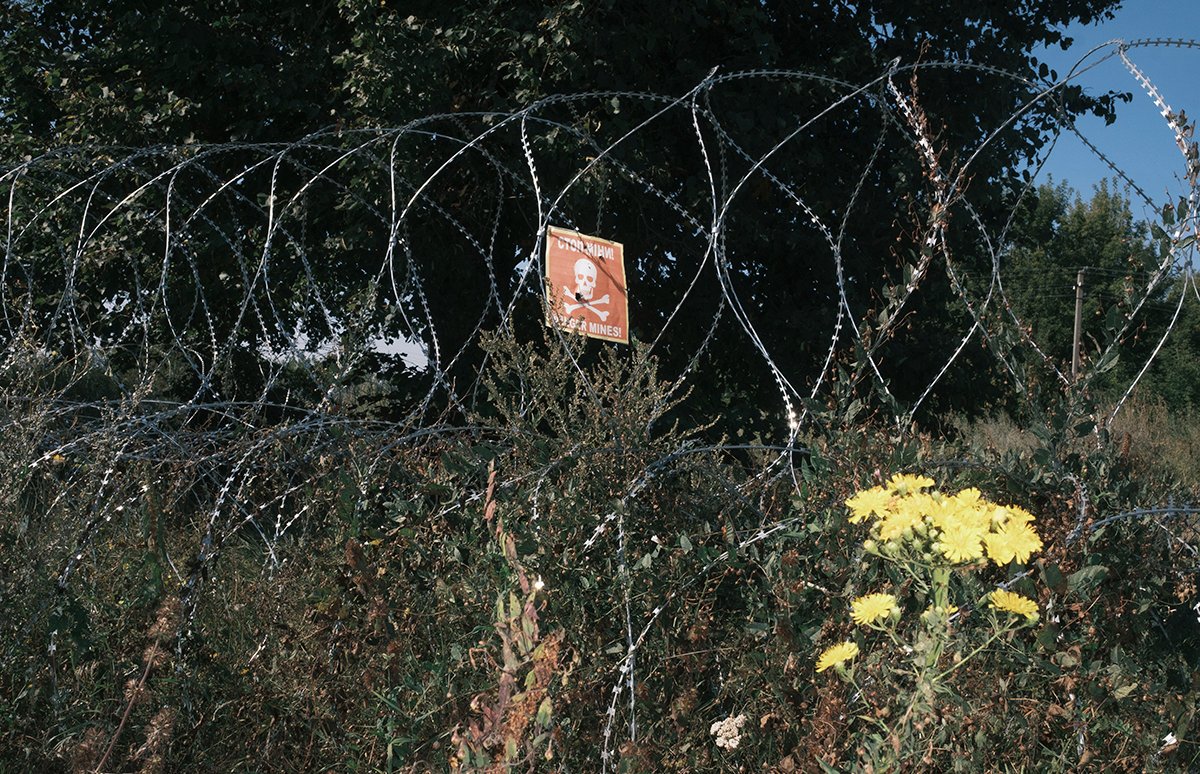



European leaders are reportedly considering the creation of a 40-kilometre buffer zone between Russian and Ukrainian forces along the frontline in Ukraine as part of any potential peace agreement.
According to five separate diplomats who spoke to POLITICO, military and civilian officials are seriously mulling the creation of a buffer zone as part of an eventual peace deal or ceasefire agreement, though disagreements remain as to the depth that such a zone would need to be.
“The fact that officials are toying with blocking off a strip of land inside Ukraine to force fragile peace is indicative of NATO allies’ desperation for a resolution to a war nearing its fourth year,” POLITICO wrote, noting that it remained unclear whether Kyiv would accept such a plan, which would likely come with an expectation of Ukraine making territorial concessions to the Kremlin.
Officials interviewed by POLITICO suggested that anywhere between 4,000 to 60,000 military personnel may be required to patrol the border, including French and British peacekeeping troops.
Some of Ukraine’s allies have expressed concern that the creation of a buffer zone could actually expose the country to an even greater risk of renewed attack from Russia, given that Ukraine is dealing with “an adversary who is not negotiating in good will”, in the words of one European official. Jim Townsend, a former Pentagon official, told POLITICO that the plan amounted to “grasping at straws” and that a British and French peacekeeping force would not prevent Russia from invading Ukraine again in the future.
Russian military analyst Kirill Mikhailov describes the idea of a buffer zone as “rather meaningless without Russia’s consent” and warns that the scheme could only realistically come into being if it were administered by an international body such as the Organisation for Security and Cooperation in Europe. It would also require a mechanism that would reimpose sanctions on Russia should it violate the zone, he adds.
Mikhailov estimates that a buffer zone would require more than 100,000 military personnel as it would need “forces at least comparable to the armies of [Russia and Ukraine]” and that “no country in the world would want to send troops” due to the enormous cost involved.

A man holds a bullet-hole riddled road sign showing the direction to Ukraine and Russia, in Sudzha, Russia’s western Kursk region, 16 August 2024. Photo: AP / Scanpix / LETA
Military analyst and former Ukrainian intelligence officer Ivan Stupak believes that a buffer zone would “only be possible after the end of the war and the signing of a long-term peace agreement”. To be implemented, Stupak says that Russian and Ukrainian forces would both have to retreat “a considerable distance” from their positions on the front line, leaving several significant Ukrainian towns and cities, including Pokrovsk and Kostyantynivka, in the buffer zone, and thus administered by neither side. Residents of towns that fall into the buffer zone may be allowed to remain there, Stupak says, as long as the “implementation of any peace deal is effectively monitored”.
Stupak estimates that a buffer zone would require tens of thousands of peacekeeping troops, and cites the example of the one between the Republic of Cyprus and the self-declared but unrecognised Turkish Republic of Northern Cyprus, which, despite taking up a far smaller area, still required annual funding to the tune of €43 million in 2021. Stupak is also sceptical of the idea that European states would be prepared to deploy their militaries to oversee the buffer zone, and suggests that forces from China, India, Belarus or Kazakhstan were more likely to end up overseeing the area under a UN mandate.
Stupak also warns that the buffer zone would require “a large amount of expensive equipment” such as motion sensors, cameras and radars capable of detecting advancing troops or drone launches, sufficient to cover it in its entirety and that, as a result, the zone would require a “completely lifeless” area, devoid of both civilians and military personnel that would need to be monitored using advanced technology. This would raise the questions “who’s going to pay for all this? And how long should the UN contingent be there?”, Stupak adds.

A sign warning of landmines on the Ukrainian-Russian border in Ukraine’s Sumy region. Photo: EPA / George Ivanchenko
One Russian military expert, who spoke to Novaya Europe on the condition of anonymity, said that the proposal to create a buffer zone was “obviously impossible”, given that Putin has repeatedly rejected the idea that NATO troops could be stationed in Ukraine.
While European officials would expect NATO military personnel to exercise control over the border zone, Putin has consistently referred to any buffer as being under the full control of the Russian military. Russia, Stupak says, would find allowing NATO troops to control the border zone “completely unacceptable”, while, in turn, Ukraine would likely oppose any plan that allowed Russia’s allies such as China or Belarus to patrol the border zone.
A buffer zone could only be discussed in detail after a peace treaty was signed, according to Stupak, who added that a mechanism would need to be developed to re-impose sanctions on Russia if it violated the zone. The mandate given to any peacekeeping force would also need to be fine tuned, as it’s unclear at present where any troops would be based, and how civilian populations remaining in the buffer zones might be accommodated.
Stupak estimates that the buffer zone would “cost hundreds of millions of dollars per month” and that the UN, the US, or even the EU, would be reluctant to foot the bill, rendering the idea of a buffer zone little more than a fantasy for the time being.
The Russian government has banned independent media. We were forced to leave our country in order to keep doing our job, telling our readers about what is going on Russia, Ukraine and Europe.
We will continue fighting against warfare and dictatorship. We believe that freedom of speech is the most efficient antidote against tyranny. Support us financially to help us fight for peace and freedom.
By clicking the Support button, you agree to the processing of your personal data.
To cancel a regular donation, please write to [email protected]
VPNovaya
Help Russians and Belarusians Access the Truth
